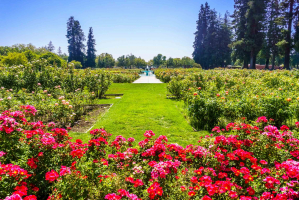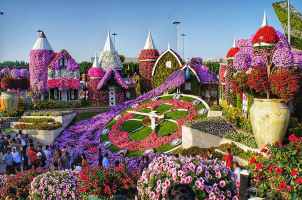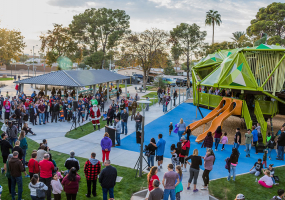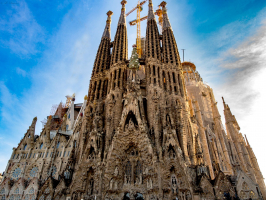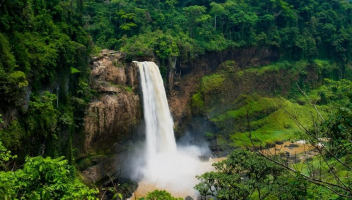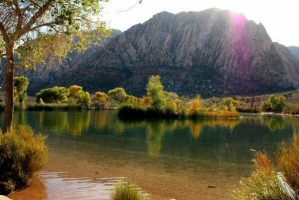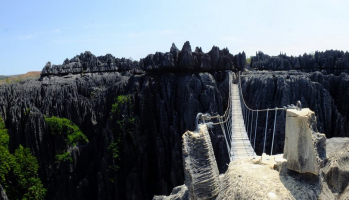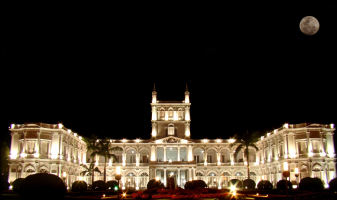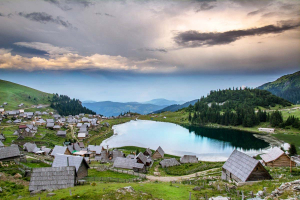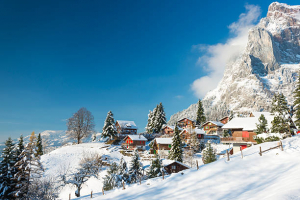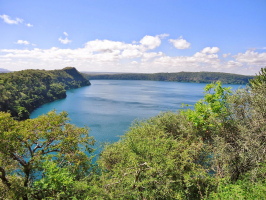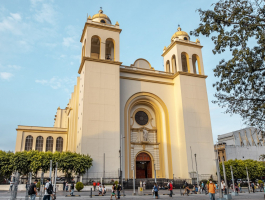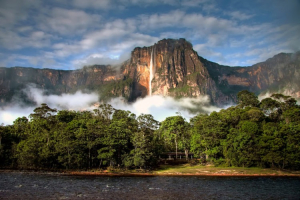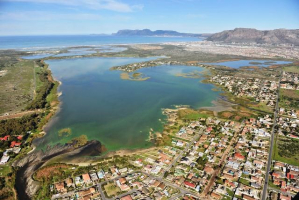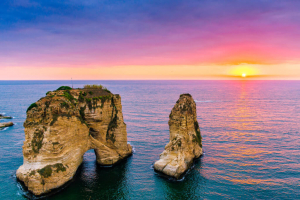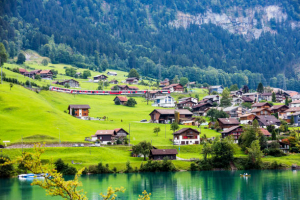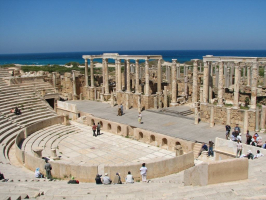Top 10 Best Parks to Visit in Barcelona
Barcelona's parks may be less famous than the legendary gardens in Paris, Berlin, London and Madrid, but the city has a wide variety of beautiful parks to ... read more...select from, many of them are filled with historic landmarks and structures. Let's check out the Best Parks to Visit in Barcelona below!
-
The most popular park in Barcelona is located on the site of the old citadel, close to the sea and the Born area. There are beautiful gardens, a huge waterfall, a boating lake, historic architecture, and a zoological park on the 17-hectare property. The former arsenal building of the citadel, which today houses the Parliament of Catalonia, is located in the park's center. Plaça de Joan Fiveller, in front of the parliament building, features a pond in the center of oval rings of well-kept greenery.
The Cascada Fountain, a spectacular 19th-century waterfall fountain that overlooks the rest of the park, is located in the park's northern corner. The waterfall is flanked by two sets of steps that lead to an exquisite temple-like monument crowned by a gilded sculpture of Aurora riding four horses. A rearing Pegasus, flower-bearing cherubs, a golden phoenix, a griffin, and a center sculpture portraying Venus' birth are among the stone sculptures in the fountain. Don't forget to visit the unique wooly mammoth sculpture next to the lake, which was added to the park in 1907.
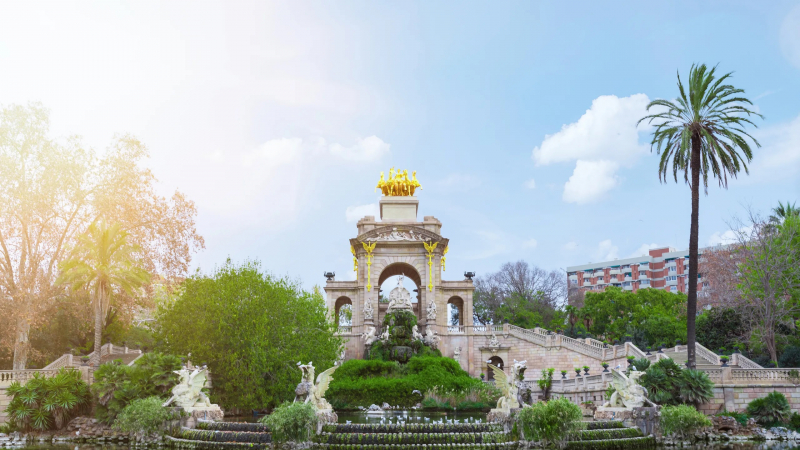
Parc de la Ciutadella (Ciutadella Park) 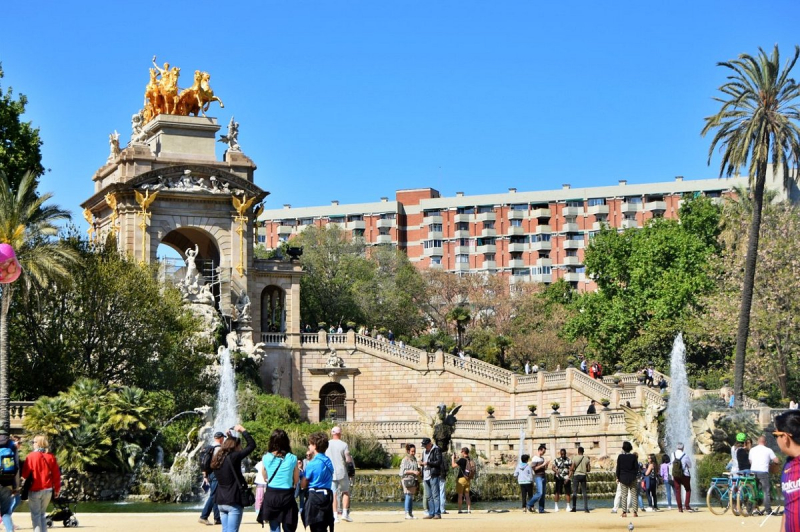
Parc de la Ciutadella (Ciutadella Park) -
Any art lover should pay this place a visit. It houses a magnificent collection of Antoni Gaud's paintings. The architecture is a mix of whimsical and rustic, with Mediterranean and modernist influences.
Visitors entering from Carrer d'Olot on the southeastern side pass between two gatehouses inspired by the Hansel and Gretel myth. The Dragon Staircase, with its mosaic dragon sculpture, is just a few feet away, leading to the Hypostyle Room. The esplanade, on the top level of this structure, is lined with a beautiful wall that ripples in colorful waves, resembling a sea serpent. The elevated concourse's exterior walls are flanked by vaulted columns that resemble twisted stone tree trunks. The park is wound with walks through garden areas and woodlands that feature magnolias, lavender, and rosemary, as well as a variety of trees, including almond and olive trees, beyond the buildings.
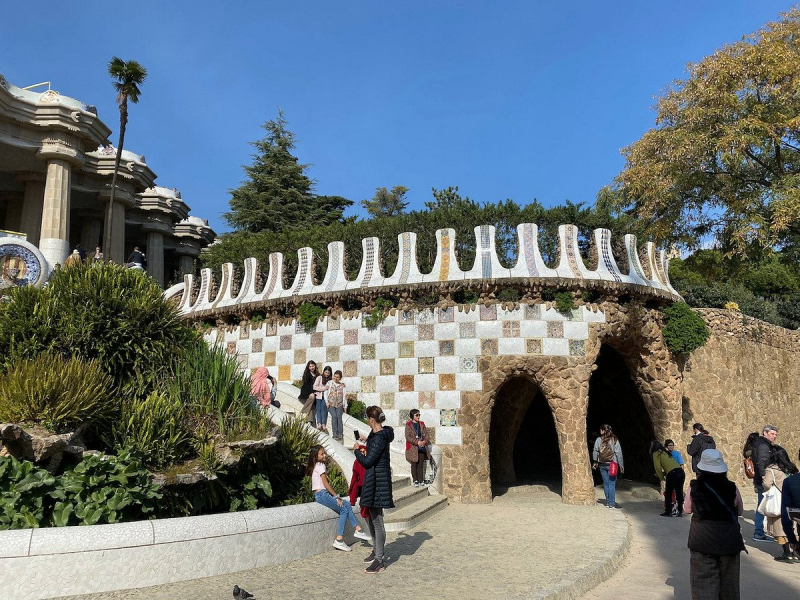
Parc de Güell (Güell Park) 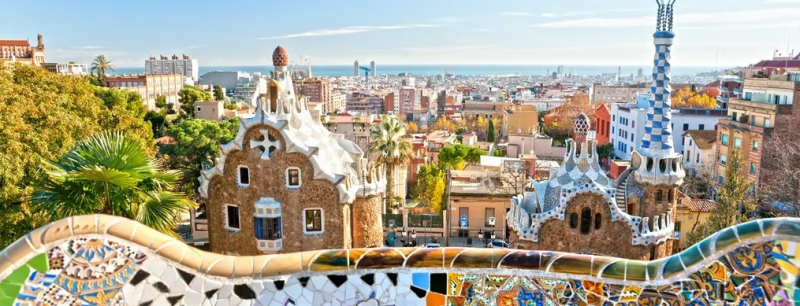
Parc de Güell (Güell Park) -
This park, which is located on the slopes of Montjuic, covers a large area in and surrounding Montjuic, south of the city center. The small mountain, topped by the 17th-century Castel de Montjuic, which currently houses a military museum and offers spectacular views of the city and the water, overlooks the main Mediterranean terminals.
The primary observation deck near the castle is the Mirador de Montjuic, but the Mirador d'Ocell de Mar and Mirador de Migdia offer equally breathtaking views. The Botanic Garden of Barcelona, located southwest of the castle, is one of the park's most beautiful gardens, replete with the Museum of the Botanic Institute of Barcelona, where visitors may learn about the garden's history. The Jardins de Joan Maragall and the Historic Botanic Garden, both towards the bottom of the slope, include beautiful plants, architecture, and decorative fountains.
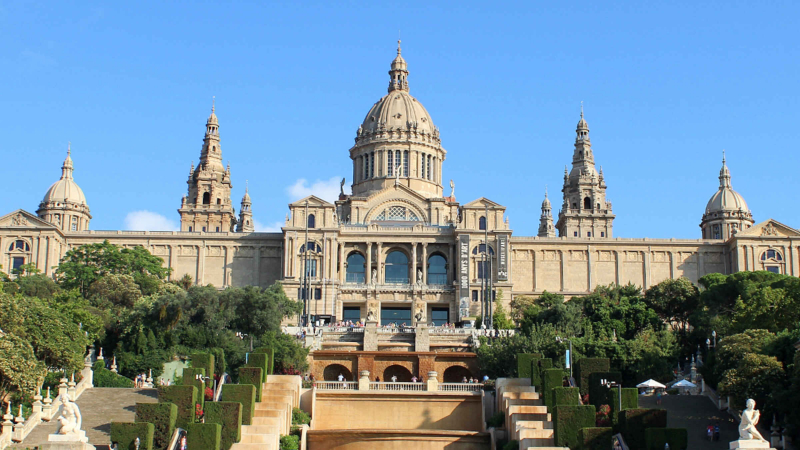
Parc de Montjuïc (Montjuïc Park) 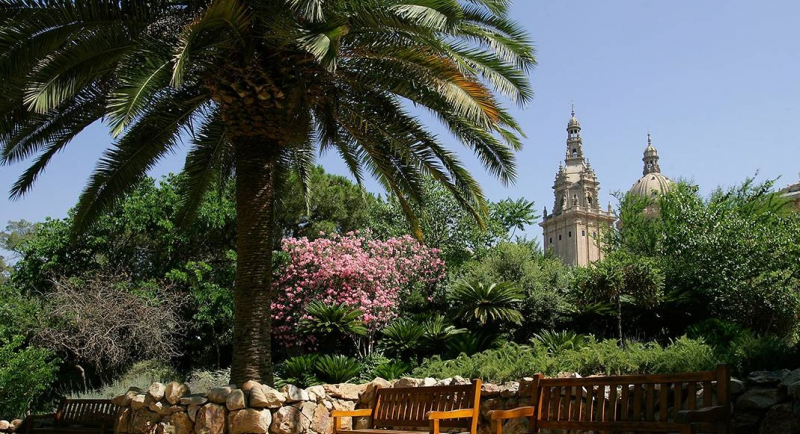
Parc de Montjuïc (Montjuïc Park) -
The primary entrance to the Jardins de Pedrables is on Avinguda Diagonal, and visitors are greeted with a pool dominated by a marble female figure after passing through the wrought-iron gate. At the other end of the park, the former palace now houses the Museums of Decorative Arts, Ceramics, and Interior Design.
The formal gardens combine English and French styles, but Mediterranean influences abound, as seen by the park's numerous sculptures, many of which were sculpted in the early twentieth century. The park is known for its numerous rare trees, including a Sictus tree (Tetraclinis articulata), stone pine (Pinus pinea), and Himalayan cedars. Japanese cedars, Atlas cedars, and incense cedars are among the other notable trees. There are various types of cypress trees, as well as shrubs such as boxwood and sweet bay. Bougainvillea may be seen climbing trees and structures around the park, and the 250-meter surrounding wall of the garden is adorned with it.
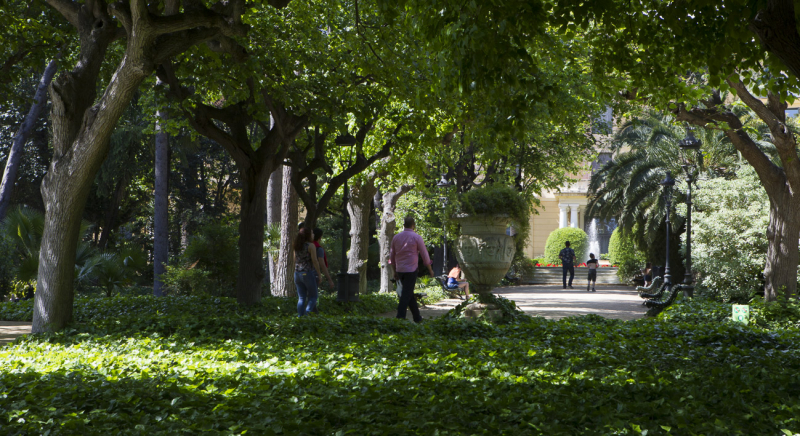
Jardins de Pedralbes (Pedralbes Gardens) 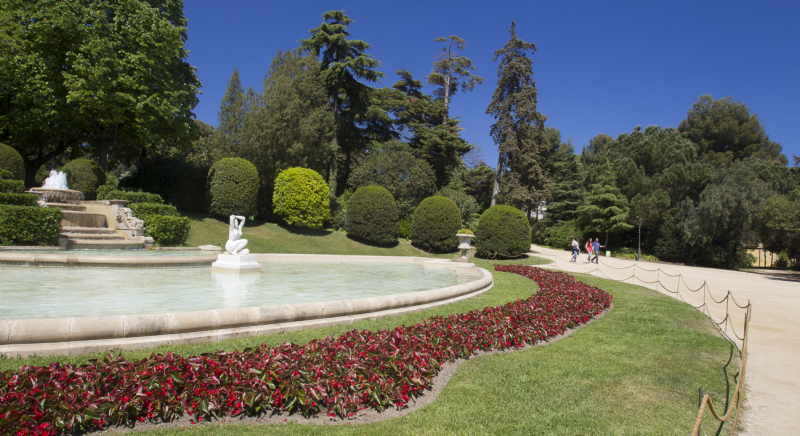
Jardins de Pedralbes (Pedralbes Gardens) -
The Horta Labyrinth Park is well worth the time and effort, despite its location on the outskirts of the city to the north in the Horta district. The labyrinth in the center of the park, constructed by Domenico Bagutti in 1791, is made up of dense walls of manicured cypress trees. A small fountain and a statue of Eros, the Greek God of Love, are located in the maze's center.
Throughout the park, there are various temple-like pavilions, many of which provide excellent views of the labyrinth and park. Tourists will find sculptures of Greek figures there, as well as around the park, including Theseus and the nine muses. There is an elevated neoclassical pavilion and pond at the park's back, from where tourists may get the best views of Barcelona. A linden tree and a Himalayan cedar, both included in the Catalogue of Trees of Local Interest, as well as a Jupiter tree, a camelia plantation, evergreen oaks, and a sequoia may be found in the park.
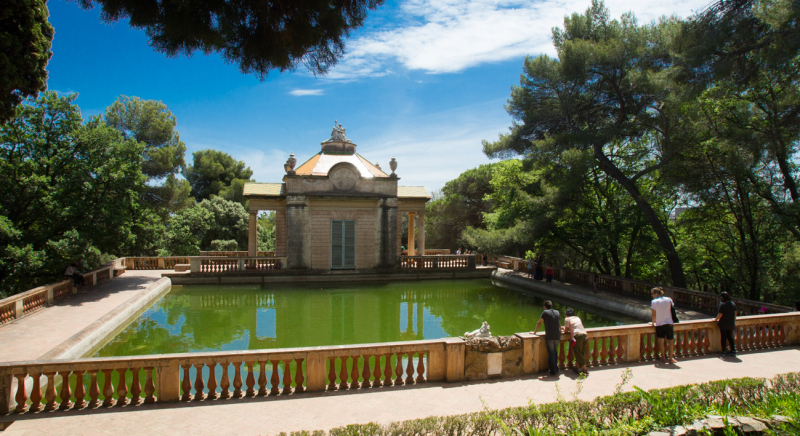
Parc del Laberint d'Horta (Horta Labyrinth Park) 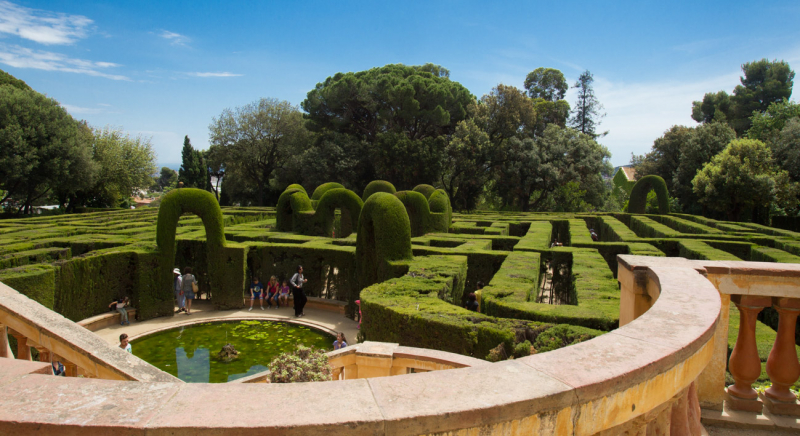
Parc del Laberint d'Horta (Horta Labyrinth Park) -
The Laribal Gardens, located on the lower slopes of Montjuic and next to the larger Jardins de Joan Maragall, are a five-hectare terraced landscape built for the 1929 Barcelona World's Fair. The Joan Miró Foundation museum is located near the Escales del Generalife, a long and steep set of stone steps inspired by the Alhambra, on the park's eastern end.
The Font del Gat (Fountain of the Cat), a favorite picnic site, is one of the garden's most notable sculptures and beautiful fountains. If you forgot to bring a picnic, a café is conveniently located nearby. In terraced gardens, the park's flora includes a mix of trees, aromatics, and decorative flowers. Among the cypress, fig, and palm trees, visitors will find ivy, as well as more formal gardens of rosemary, lavender, and geraniums, as well as the Colla de l'Arrs rose garden. While you're there, take a trip over to the Greek Theater (Teatre Grec), which is just north of the eastern end of the park at the Escales del Generalife and has gorgeous gardens surrounding it.
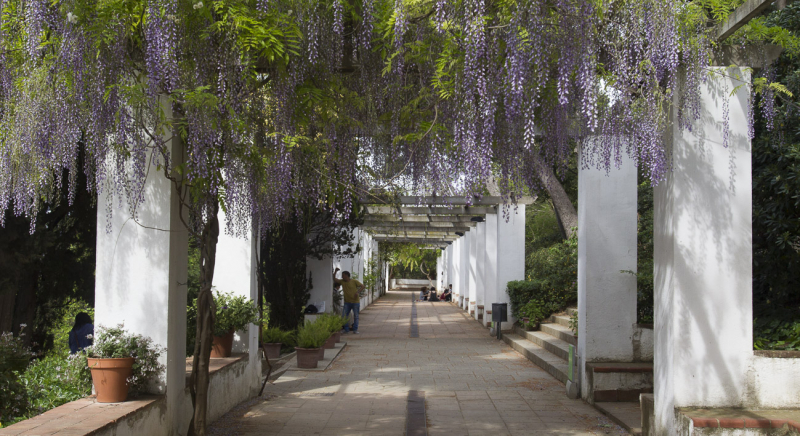
Jardines de Laribal (Laribal Gardens) 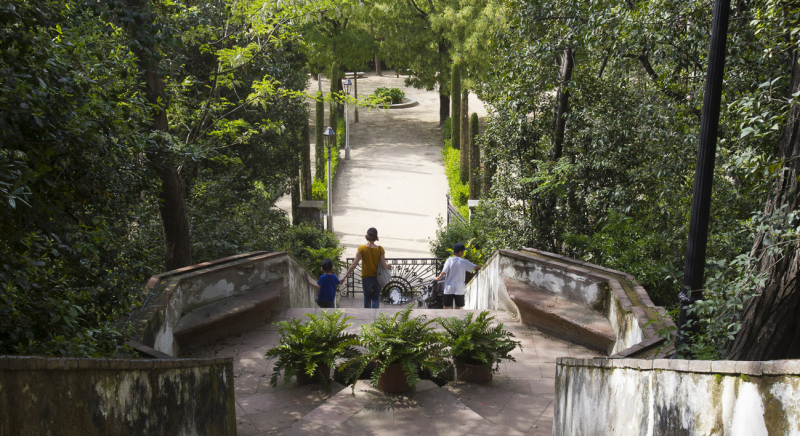
Jardines de Laribal (Laribal Gardens) -
Cervantes Park is well renowned for its roses, which bloom every year from spring through fall, with over 10,000 bushes. The International New Rose Competition, which challenges horticulturists to present new varieties of the fragrant flower every May, is also held there.
This wedge-shaped park, located west of the city center in the Les Corts neighborhood, spans four hectares and makes use of every square inch. Rose vines run along rustic trellises that stretch over the pathways to create flower arcades, giving the park a festive feel throughout, and a long, lush arcade welcomes visitors at the park's entrance off Ronda de Dalt. A well-equipped play area with climbing structures, swings, slides, and table tennis, as well as numerous shaded benches and a fountain, can be found in the park's western section.
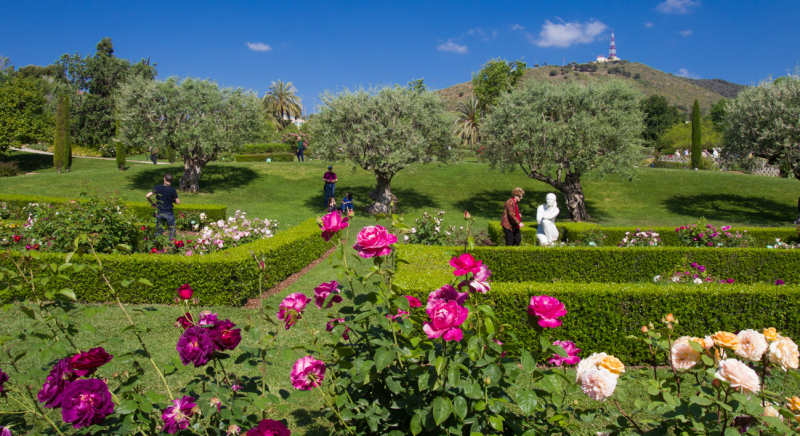
Parc de Cervantes (Cervantes Park) 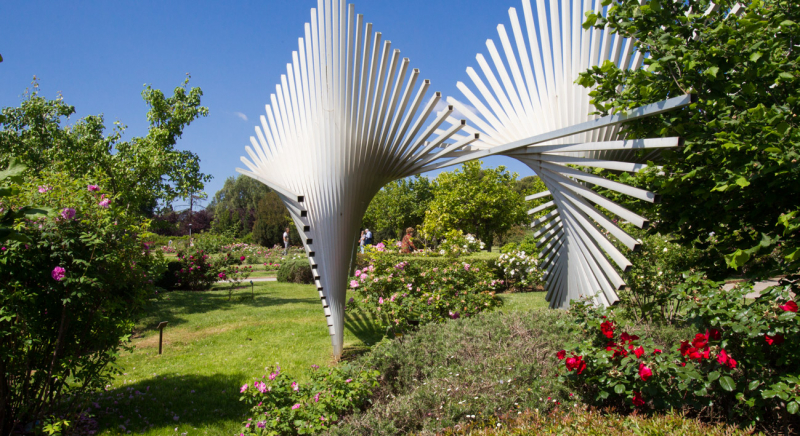
Parc de Cervantes (Cervantes Park) -
The park is located near Sants, Barcelona's major train station, and is a popular resting spot for both commuters and visitors. An iron dragon, really an enormous slide, a lake guarded by Neptune with Venus looking at her reflection, and sun-bathed grass, all of which made up Espanya Industrial Park.
The "Dragon of St. George," an iron slide in the park's northwest corner, has become the park's most popular slide. for kids, is the park's most popular attraction for children. The park's centerpiece is a man-made lake flanked by lighthouses and broad steps made to mimic Roman baths. A statue of Neptune stands in the middle of the lake, overlooking the water, and there are various fountain "islands" where tourists may relax and enjoy the scenery. A vast grass-covered with shade trees covers the park's southern half, providing a place to get out of the heat and be surrounded by lush greenery.
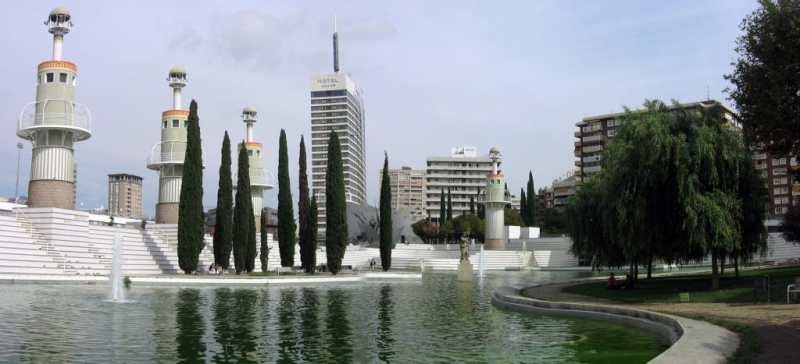
Parc de l'Espanya Industrial (Espanya Industrial Park) 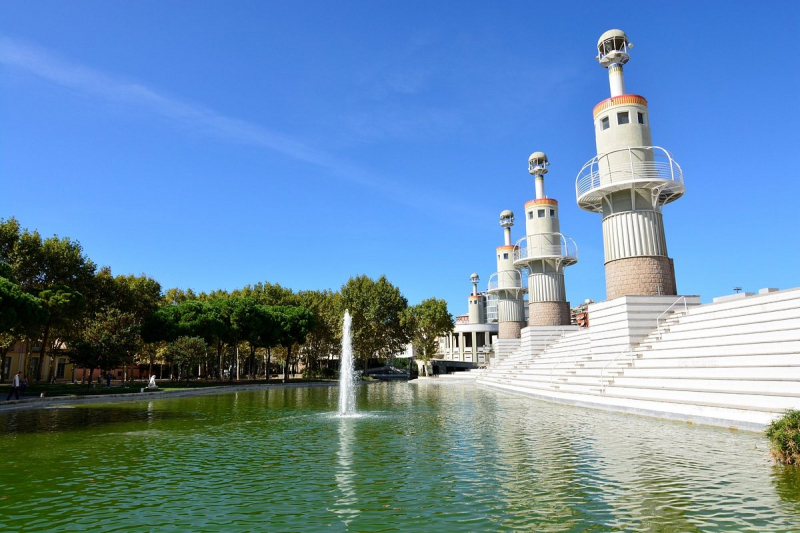
Parc de l'Espanya Industrial (Espanya Industrial Park) -
The green pine forest in the Turó de la Peira, high up near Nou Barris, is full of the scent of Mediterranean plants. The first park in the Nou Barris area opened in 1936 and was renovated in 1977, utilizing ground that formerly belonged to Can Peguera's old farmhouse.
The views from the top in the middle of this attractive neighborhood park are spectacular, offering a view of the Barcelona skyline and the water in the distance. Tourists can reach the top through a gradual winding path or a stone stairway, which is shorter but more strenuous. The park is eight hectares in size and has a variety of athletic amenities, including bocce, table tennis, volleyball, and soccer. There is also a great children's playground and a dog park, as well as numerous benches spread around the park, many of which are shaded by trees.
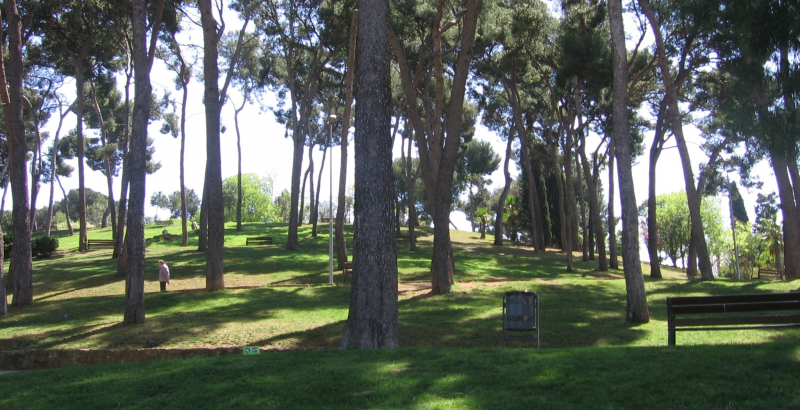
Parc de Turó de la Peira (Turó de la Peira Park) 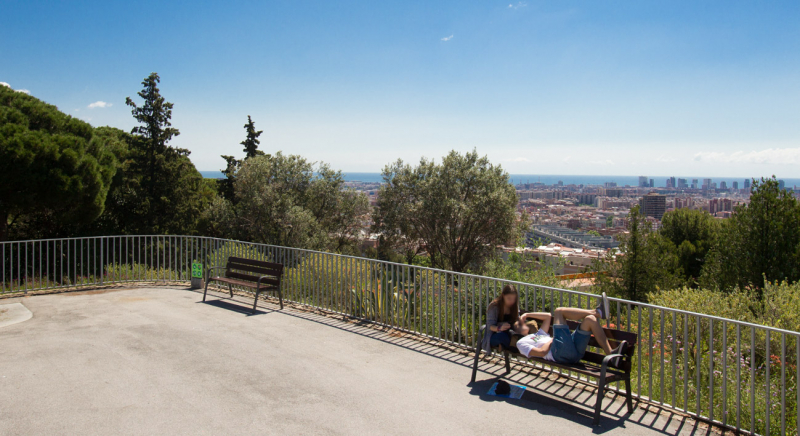
Parc de Turó de la Peira (Turó de la Peira Park) -
Parc de Aigües in Barcelona's Horta/Guinardo district might be precisely what you're looking for if you're looking for a place to let your kids play, walk your dog, enjoy a picnic, or escape the heat of August. The park is well-kept, and there is plenty of evergreen and deciduous trees that can provide shade and privacy.
The park was constructed on the former Barcelona Water Company's property. It has the form of a hilly island with several terraces divided by stone walls and paths. This mountainside park is built on stone terraced, with some places dedicated to quiet contemplation and others to amusement. Three playgrounds and many small sports areas, including a pétanque court, are located inside the park. In the shade of cypress, yucca, and sweet bay trees, there are also plenty of chairs and picnic tables.
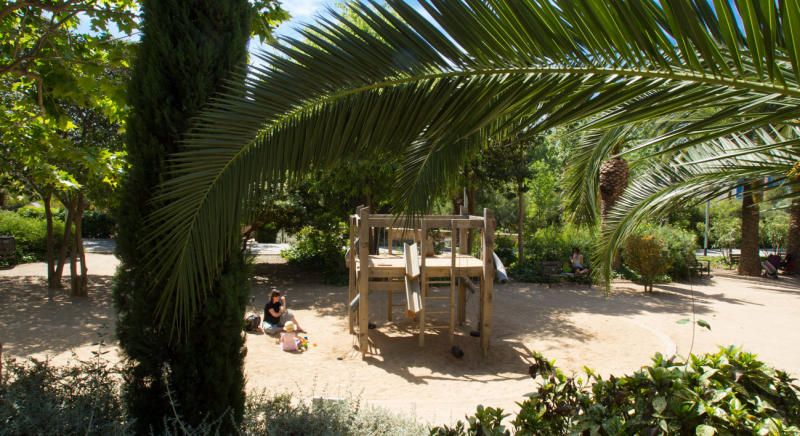
Parc de Aigües (Aigües Park) 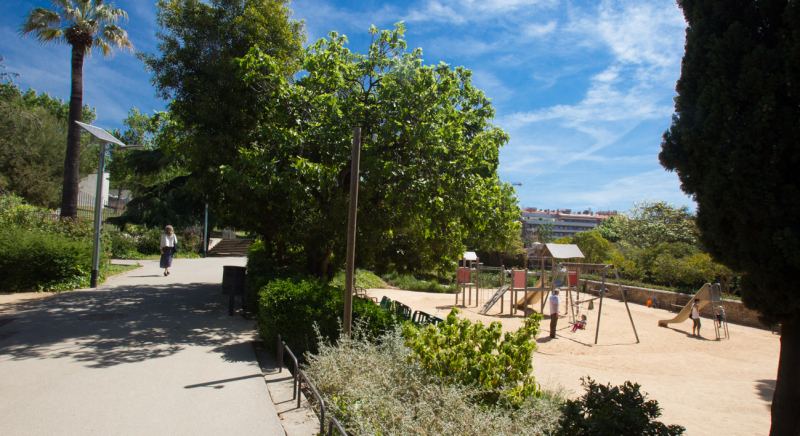
Parc de Aigües (Aigües Park)












